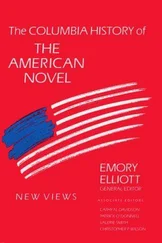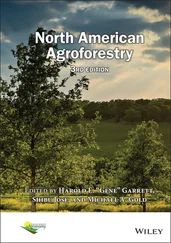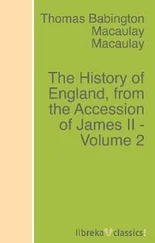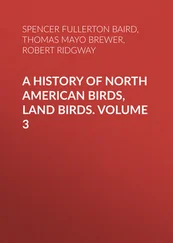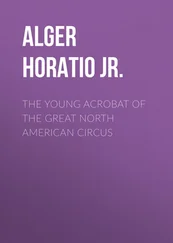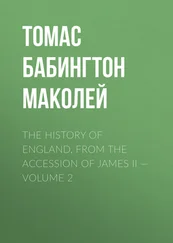Robert Ridgway - A History of North American Birds, Land Birds. Volume 1
Здесь есть возможность читать онлайн «Robert Ridgway - A History of North American Birds, Land Birds. Volume 1» — ознакомительный отрывок электронной книги совершенно бесплатно, а после прочтения отрывка купить полную версию. В некоторых случаях можно слушать аудио, скачать через торрент в формате fb2 и присутствует краткое содержание. Жанр: foreign_antique, Биология, foreign_edu, на английском языке. Описание произведения, (предисловие) а так же отзывы посетителей доступны на портале библиотеки ЛибКат.
- Название:A History of North American Birds, Land Birds. Volume 1
- Автор:
- Жанр:
- Год:неизвестен
- ISBN:нет данных
- Рейтинг книги:3 / 5. Голосов: 1
-
Избранное:Добавить в избранное
- Отзывы:
-
Ваша оценка:
- 60
- 1
- 2
- 3
- 4
- 5
A History of North American Birds, Land Birds. Volume 1: краткое содержание, описание и аннотация
Предлагаем к чтению аннотацию, описание, краткое содержание или предисловие (зависит от того, что написал сам автор книги «A History of North American Birds, Land Birds. Volume 1»). Если вы не нашли необходимую информацию о книге — напишите в комментариях, мы постараемся отыскать её.
A History of North American Birds, Land Birds. Volume 1 — читать онлайн ознакомительный отрывок
Ниже представлен текст книги, разбитый по страницам. Система сохранения места последней прочитанной страницы, позволяет с удобством читать онлайн бесплатно книгу «A History of North American Birds, Land Birds. Volume 1», без необходимости каждый раз заново искать на чём Вы остановились. Поставьте закладку, и сможете в любой момент перейти на страницу, на которой закончили чтение.
Интервал:
Закладка:
I. ALECTORIDES. 12 12 Groups G., H., and I. are respectively equal to the Charadriomorphæ , Pelargomorphæ , and Geranomorphæ of Huxley.
Tibiæ naked below. Neck, legs, and feet much as in the last group, but hallux reduced and obviously elevated, with small claw, the resulting foot cursorial (natatorial and lobate in Fulica ). Wings and tail commonly as in Herodiones . Head less narrowed and conic than in the last, fully feathered or with extensive baldness (not with definite nakedness of loral and orbital regions). Bill of various shape, usually lengthened and obtuse, never extensively membranous. Rictus moderate. Nostrils lower than in Herodiones . Pterylosis not peculiar. Palate schizognathous. Carotids double. Nature præcocial and ptilopædic. Comprising the Cranes and Rails and their allies; the former agreeing with the Herodiones superficially in stature, etc., but highly diverse in the schizognathous palate, præcocial nature, etc.
J. LAMELLIROSTRES.Feet palmate; tibiæ feathered (except Phœnicopterus ). Legs near centre of equilibrium of the body, its axis horizontal in walking; not lengthened except in Phœnicopterus . Knee-joint rarely exserted beyond general skin of the body. Wings moderate, reaching when folded to, but not beyond, the usually short and rounded (exceptionally long and cuneate) tail. Feet tetradactyle (except sometimes in Phœnicopterus ); hallux reduced, elevated and free, often independently lobate. Bill lamellate, i. e., furnished along each commissural edge with a regular series of mutually adapted laminæ or tooth-like processes, with which correspond certain laciniate processes of the fleshy tongue, which ends in a horny tip. Bill large, thick, high at base, depressed towards the end, membranous to the broad obtuse tip, which is occupied by a horny “nail” of various shape. Nostrils patent, never tubular; nasal fossæ slight. No gular pouch. Plumage dense, to resist water. Eyes very small. Head high, compressed, with lengthened, sloping frontal region. Palate desmognathous. Reproduction præcocial; young ptilopædic. Eggs numerous. Carotids double. Sternum single-notched. Comprising Flamingoes and all the Anserine birds.
K. STEGANOPODES.Feet totipalmate; hallux lengthened, nearly incumbent, semilateral, completely united with the second toe by a full web. Tibiæ feathered; position of legs with reference to axis of body variable, but generally far posterior; knee-joint not free. Wings and tail variable. Bill of very variable shape, never lamellate, wholly corneous; its tomia often serrate; external nares very small or finally abortive. A prominent naked gular pouch. Tarsi reticulate. Sternum entire or nearly so; furculum confluent with its keel. Carotids double. Palate highly desmognathous. Reproduction altricial; young psilopædic or ptilopædic. Eggs three or fewer.
L. LONGIPENNES.(To most of the characters of the group here given the genus Halodroma is a signal exception, though unquestionably belonging here.) Feet palmate. Tibiæ feathered. Legs at or near centre of equilibrium, affording horizontal position of axis of body in walking. Knee scarcely buried in common integument; tibia sometimes with a long apophysis. Hallux elevated, free, functionless; very small, rudimentary, or wanting. Rostrum of variable shape, usually compressed and straight to the hooked end, sometimes entirely straight and acute, commonly lengthened, always corneous, without serration or true lamellæ. Nostrils of various forms, tubular or simply fissured, never abortive. No gular pouch. Wings very long and pointed, surpassing the base and often the end of the large, well-formed, few-feathered tail. Carotids double. Palate schizognathous. Reproduction altricial; young ptilopædic. Eggs three or fewer. Habit highly volucral.
M. PYGOPODES.Feet palmate or lobate. Tibiæ feathered, often with a long apophysis, always buried in common integument nearly to the heel-joint, necessitating a more or less erect posture of the body on land, where progression is difficult. Hallux small, elevated or wanting; feet lobate or palmate. Bill of indeterminate shape, wholly corneous, never lamellate or serrate, nor with gular pouch. Nostrils not abortive. Wings very short, reaching scarcely or not to the base, never to the tip, of the short, sometimes rudimentary, tail. Palate schizognathous. Carotid usually double, sometimes single (in Podiceps and Mergulus ). Nature altricial or præcocial; young ptilopædic. Highly natatorial.
N. SPHENISCI.With general characters of the last group, but distinguished by unique ptilosis and wing-structure, etc. Plumage without apteria, of singularly modified scale-like feathers on most parts; no developed remiges. Wings unfit for flight, insusceptible of perfect flexion or extension, very short, with peculiarly flattened bones and stable articulations. Skeleton non-pneumatic. Many bones, terete in ordinary birds, here flattened. Metatarsal bone flattened transversely, doubly fenestrate. Hallux elevated, lateral, minute, free. No free pollex. Two anconal sesamoids; patella from double centres; tibia without apophysis; a free tarsal ossicle. Sternum with long lateral apophyses. Pelvic connections unstable. Carotids double. Comprising only the Penguins. Confined to the Southern Hemisphere.
Having thus presented and defined an arrangement of the higher groups into which recent Carinate birds are susceptible of division, I next proceed to the consideration of the North American Families of birds which the authors of the present work have provisionally adopted as suitable to the end they had in view. Professor Baird urges the caution that the scheme is intended merely for the convenient determination of the North American species, aware that in many instances diagnoses or antitheses of entire pertinence in such application would fail or be negatived by consideration of the exotic forms. The arrangement of the families here adopted is essentially that presented in 1858 in Professor Baird’s “Birds of North America,” modified somewhat in accordance with more recent views of Professor Sundevall and others. But before proceeding to the analysis of the families, I will introduce an artificial clew to the preceding higher groups as adopted, so far as they are represented by North American species.
By means of which any North American bird may be readily referred to that group to which it is held to belong.
I. Toes 3; 2 in front, 1 behind ( Pici ) Picariæ.
II. Toes 3; all in front.
Toes cleft or semipalmate Limicolæ.
Toes palmate.
Nostrils tubular Longipennes.
Nostrils not tubular Pygopodes.
III. Toes 4; 2 in front, 2 behind.
Bill cered and hooked Psittaci.
Bill neither cered nor hooked. ( Cuculi or Pici ) Picariæ.
IV. Toes 4; 3 in front, 1 behind.
1. Toes syndactyle ( Cuculi ) Picariæ.
2. Toes totipalmate (all four full-webbed) Steganopodes.
3. Toes palmate.
Bill curved up Limicolæ.
Bill not curved up;
lamellate Lamellirostres.
not lamellate;
hallux lobate Pygopodes.
hallux not lobate Longipennes.
4. Toes lobate.
Tail rudimentary Pygopodes.
Tail perfect.
A horny frontal shield Alectorides.
No horny frontal shield Limicolæ.
5. Toes semipalmate;
joined by evident movable basal web ( A).
6. Toes cleft to the base,
or there immovably coherent ( B).
A.Hind toe elevated above the level of the rest.
Tibiæ naked below.
Nostrils perforate Alectorides.
Читать дальшеИнтервал:
Закладка:
Похожие книги на «A History of North American Birds, Land Birds. Volume 1»
Представляем Вашему вниманию похожие книги на «A History of North American Birds, Land Birds. Volume 1» списком для выбора. Мы отобрали схожую по названию и смыслу литературу в надежде предоставить читателям больше вариантов отыскать новые, интересные, ещё непрочитанные произведения.
Обсуждение, отзывы о книге «A History of North American Birds, Land Birds. Volume 1» и просто собственные мнения читателей. Оставьте ваши комментарии, напишите, что Вы думаете о произведении, его смысле или главных героях. Укажите что конкретно понравилось, а что нет, и почему Вы так считаете.

